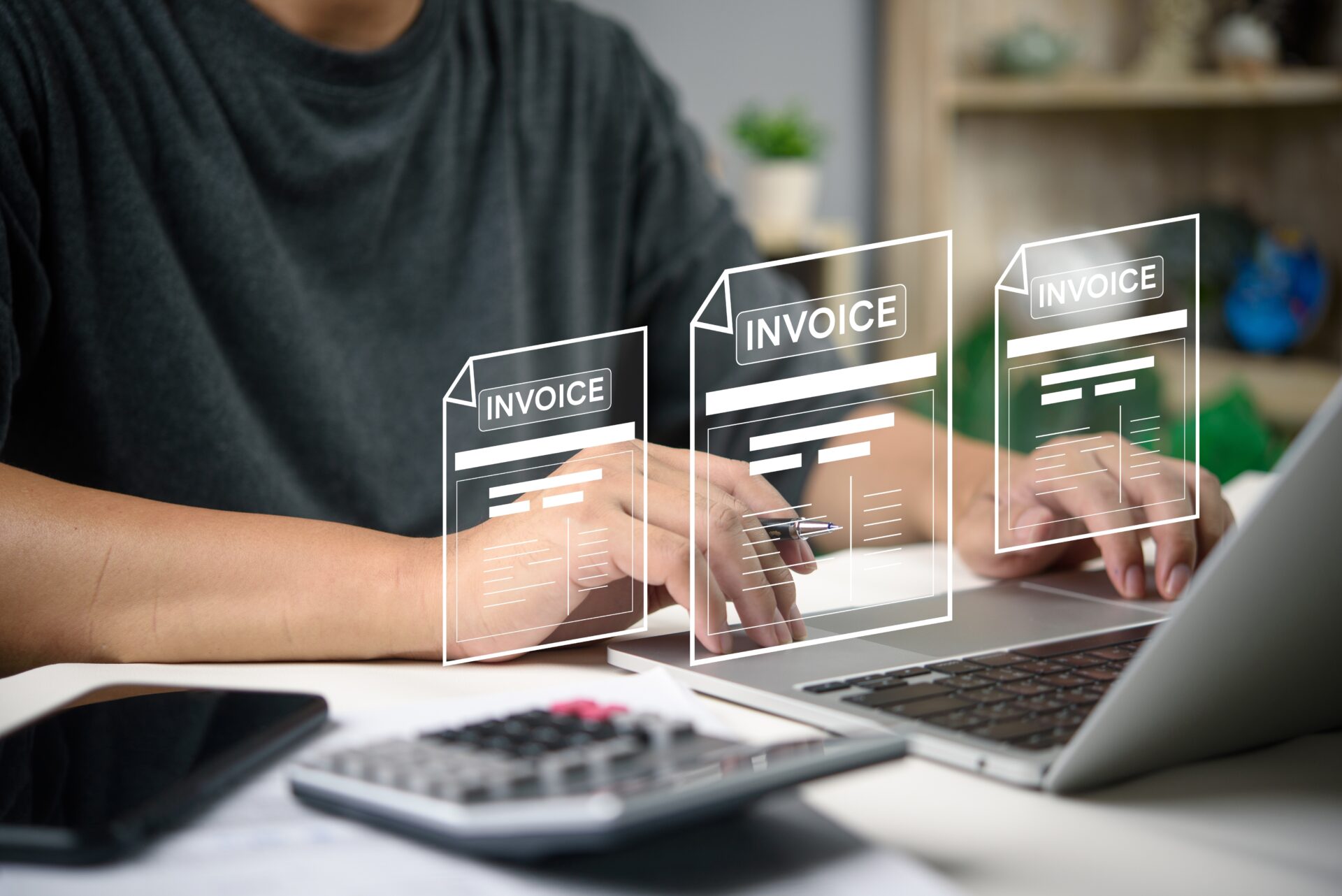Table of Contents
You’ve made the sales, delivered the work, and sent out the invoices, but now you’re waiting weeks, maybe months, to get paid. In the meantime, expenses don’t stop. Payroll, inventory orders, and new opportunities all demand cash you don’t yet have. This is a familiar struggle for many growing businesses with strong revenue but slow-paying customers.
Invoice factoring offers a fast, flexible solution by turning those unpaid invoices into immediate working capital. Instead of waiting 30, 60, or even 90 days for payment, you can access most of your cash right away. However, factoring isn’t one-size-fits-all, and the cost can vary depending on your industry, invoice volume, customer credit, and contract structure.
In this article, we’ll break down how factoring fees work, what determines the price, and how to evaluate whether the cost is worth it for your business. You’ll learn what impacts your rate, see examples of real-world factoring costs, and discover how transparent, flexible programs that help businesses unlock cash without hidden fees or long-term commitments.
What is Invoice Factoring?
Invoice factoring is a financing solution that allows businesses to convert their unpaid invoices into immediate cash. Instead of waiting for customers to pay often 30, 60, or 90 days later, you sell those invoices to a factoring company at a small discount. The factoring company advances most of the invoice value upfront, then collects payment directly from your customer when it’s due.
This process gives businesses quick access to working capital, helping them maintain steady cash flow, cover operating expenses, and seize new opportunities without waiting for slow payments. It also effectively shortens the cash conversion cycle (CCC), the time it takes to turn sales into cash in hand.
Importantly, factoring is not a loan. There’s no new debt on your balance sheet, no interest payments, and no need to pledge long-term collateral. You’re simply unlocking the cash that’s already yours, faster and more efficient.
How Much Does Factoring Typically Cost?
The cost of invoice factoring is usually expressed as a discount rate, a small percentage of the invoice’s total value that the factoring company retains as its fee. This rate reflects the cost of advancing cash before your customer pays their invoice.
On average, factoring fees range from 1% to 5% per 30 days, depending on factors like the size of your invoices, your industry, your customers’ payment reliability, and the overall risk profile of your business. For example, a company with high-volume invoices and creditworthy customers will likely pay a lower rate than one with smaller or higher-risk accounts.
Fees can also be structured in different ways. Some factoring providers charge a flat monthly rate, while others apply weekly or per-transaction fees that increase the longer invoices remain unpaid. This flexible model ensures that you only pay for the time your cash is advanced making factoring a scalable, performance-based funding option for businesses that can’t afford to wait for customer payments.
What Affects the Cost of Factoring?
While factoring provides fast access to working capital, the cost of factoring can vary widely based on several key factors. Understanding what influences your rate helps you evaluate offers and choose the most cost-effective option for your business.
- Invoice Volume: Factoring companies often reward higher invoice volume with better pricing. Businesses that consistently factor larger amounts each month typically receive lower discount rates because the increased volume spreads out the provider’s risk and administrative costs.
- Industry Risk: Your industry plays a big role in determining factoring rates. Companies in stable, predictable sectors such as manufacturing, logistics, or staffing generally enjoy lower costs. Industries with more volatility or higher default risk may face slightly higher rates to offset the added uncertainty.
- Customer Creditworthiness: Since factoring companies collect payments directly from your customers, the credit strength of those customers matters. If your clients have solid payment histories and strong credit profiles, your factoring costs will likely be lower.
- Invoice Terms: The length of your customers’ payment terms directly impacts cost. Invoices with longer terms (e.g., 60–90 days) carry more time risk and typically result in higher fees, while invoices paid quickly cost less to factor.
- Recourse vs. Non-Recourse Factoring: In recourse factoring, your business is responsible if a customer doesn’t pay. In non-recourse factoring, the factoring company assumes that risk but charges slightly higher fees in return for added protection.
- Length of Relationship or Contract Type: A strong, ongoing relationship with your factoring provider can lead to discounted rates. Committed or long-term contracts may also come with volume-based incentives or flexible fee structures designed to reward consistency and reliability.
By understanding these pricing drivers, you can better assess how factoring fits your business model and how to negotiate terms that balance cost with cash flow flexibility.
Comparing Factoring Costs to Other Funding Options
When evaluating the cost of factoring, it’s helpful to compare it with other common forms of business financing, such as bank loans, lines of credit, or merchant cash advances. While each option provides access to capital, the structure, risk, and long-term impact can differ significantly.
Traditional bank loans and lines of credit typically offer lower interest rates, but they come with stricter qualification requirements. Businesses often need strong credit histories, collateral, and lengthy approval processes that can delay funding for weeks. For companies experiencing rapid growth or cash flow gaps, that delay can be costly.
Merchant cash advances (MCAs), on the other hand, deliver fast funding but at a high price. MCAs often charge double-digit effective rates, which can quickly erode profits and create repayment pressure.
Invoice factoring strikes a balance, it provides fast, flexible access to cash without adding debt or requiring strong credit. Because funding is based on your customers’ creditworthiness rather than your own, approval is faster and easier. You also maintain full control over how funds are used, without long-term obligations or restrictive covenants.
Perhaps most importantly, factoring is often less expensive than the cost of missed opportunities. The ability to cover payroll, buy inventory, or take on a new contract immediately often far outweighs the modest fee paid to unlock cash that’s already yours.
How CapFlow Keeps Costs Competitive
At CapFlow Funding Group®, transparency and flexibility are at the heart of every funding solution. Factoring costs shouldn’t be confusing or unpredictable; that’s why CapFlow offers clear, upfront pricing with no hidden fees, ensuring business owners know exactly what they’re paying for and why.
CapFlow tailors its rates to fit each client’s needs, factoring in business size, invoice volume, and customer credit quality to provide personalized, competitive pricing. Whether you’re looking for a one-time boost or long-term funding support, CapFlow offers programs designed to match your goals.
With FactorOne, businesses can use spot factoring to fund individual invoices, perfect for occasional cash flow gaps or short-term projects. For companies seeking steady, ongoing support, mFactor and FactorLOC provide continuous access to working capital, seamlessly integrated into daily operations.
For example, a business waiting 60 days for customer payments can factor its invoices through CapFlow and receive cash within 24 hours, often for just a few percentage points of the invoice value. This fast, transparent approach empowers companies to stay liquid, competitive, and growth-focused without the burden of traditional debt.
Is Factoring Worth the Cost?
When weighing the cost of factoring, it’s important to look beyond the fee itself and consider the return on investment (ROI). By unlocking cash tied up in unpaid invoices, businesses can cover payroll on time, purchase inventory in bulk, or accept larger contracts that might otherwise be out of reach. The ability to reinvest quickly often generates more revenue than the small cost of factoring.
Factoring also provides something harder to measure: operational stability. Having steady, predictable cash flow allows business owners to focus on growth rather than collections or financing stress. When viewed this way, factoring isn’t just an expense; it’s a tool for building resilience and agility. The key is finding the right provider and pricing model that aligns with your business goals and cash flow cycle.
Key Takeaways
Factoring costs can vary depending on your industry, customers, and funding needs, but the right program can be a game-changer for cash flow. With transparent pricing, flexible terms, and fast access to working capital, factoring can help your business stay competitive and ready to grow, no matter how long customers take to pay.
Before you make a decision, try our Invoice Factoring Calculator to estimate your potential costs and funding amount. It’s a quick, easy way to see how much cash you could unlock and how factoring could improve your working capital today.
Want to know how much factoring would cost for your business? Contact CapFlow Funding Group® for personalized quotes and same-day funding options.




